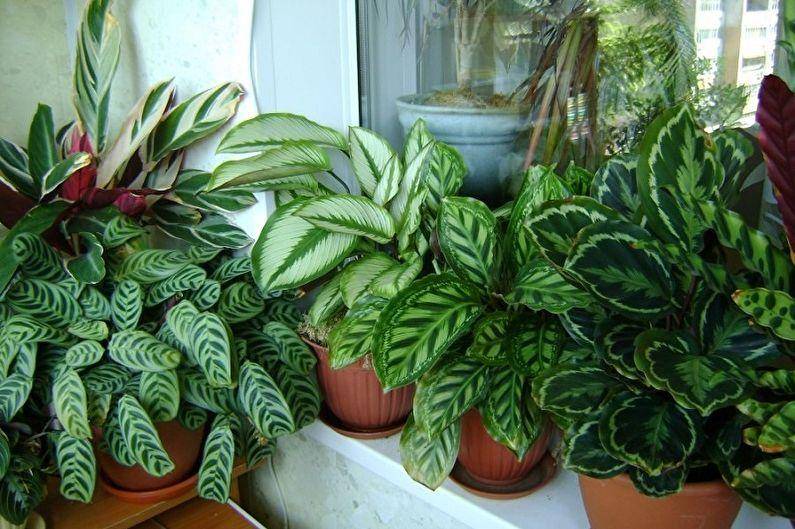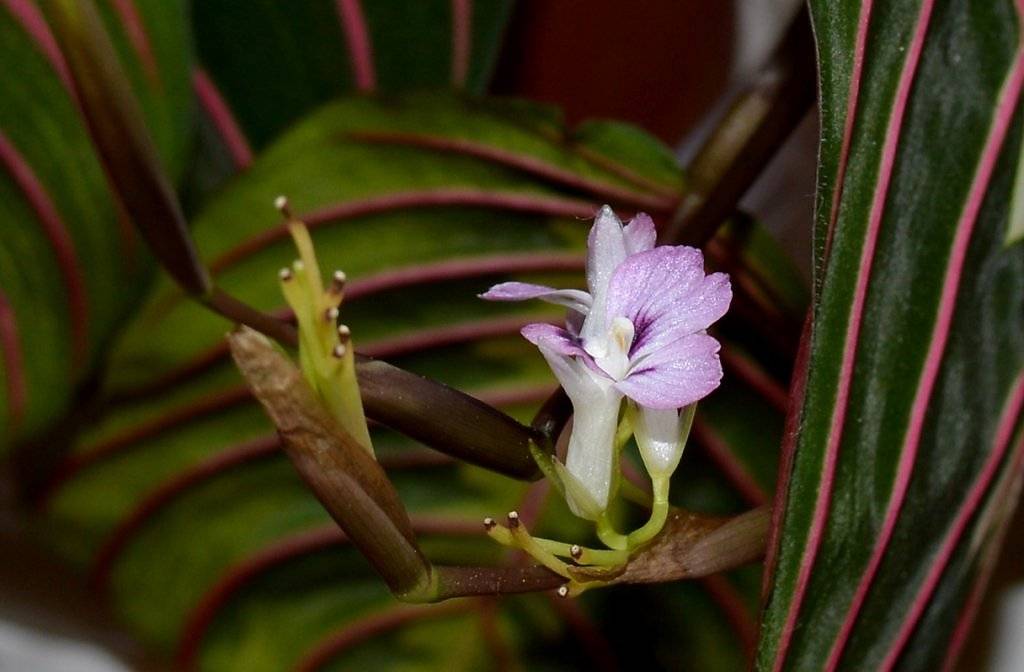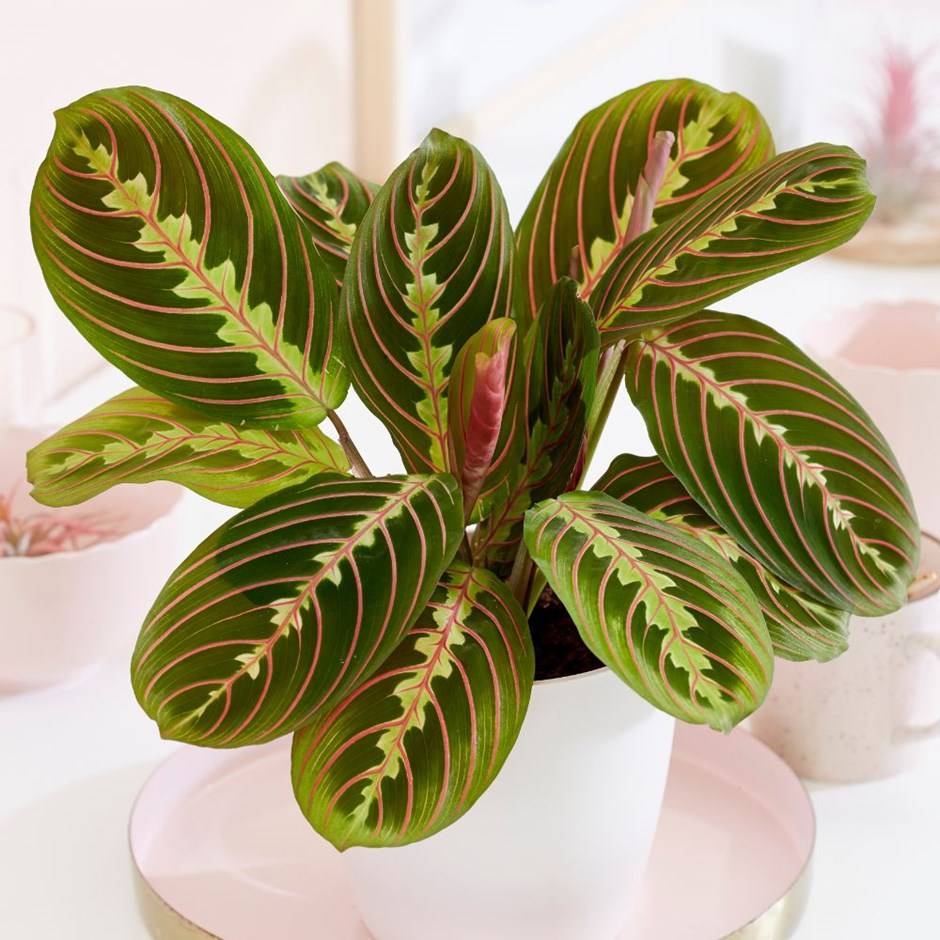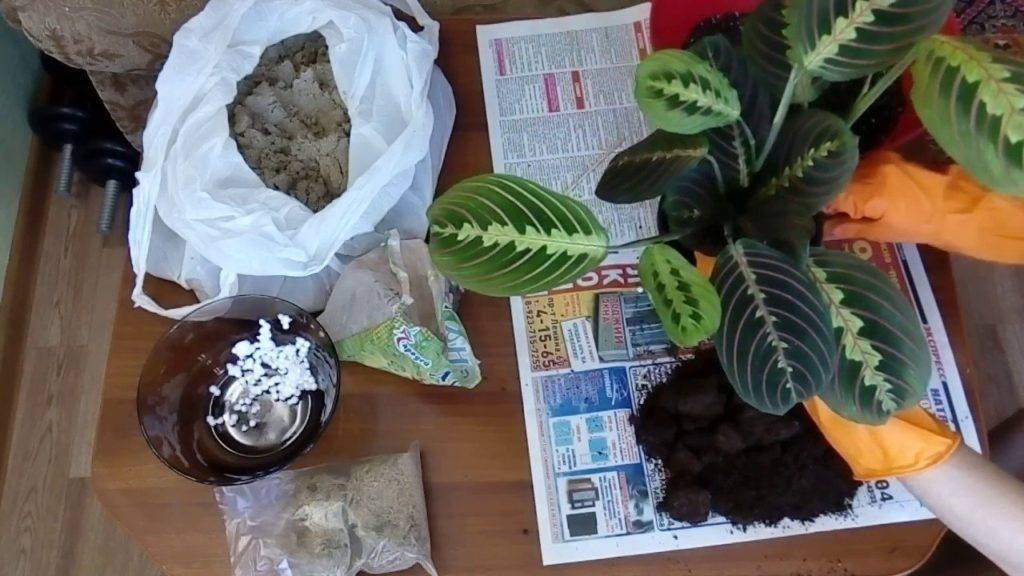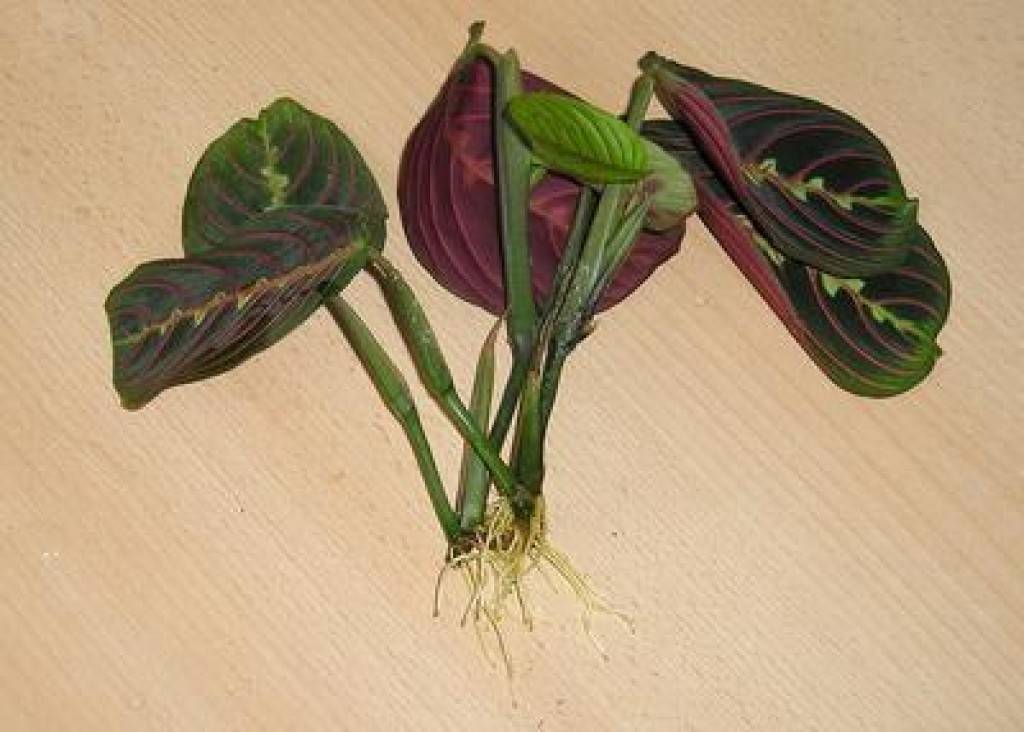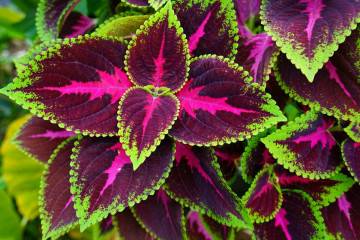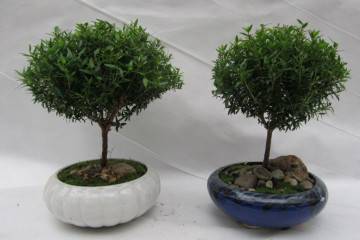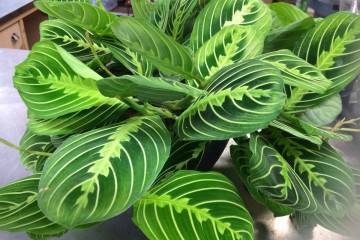Arrowroot is a flower, a houseplant - is it worth keeping at home
Content:
The Marantaceae family is known for its colorful representatives, which have lovely patterned leaves. These plants are decorative-deciduous, but in beauty they are able to compete with flowering counterparts. Painted arrowroot leaves with stripes, specks and strokes of different shades are good throughout the year, and the beauty of flowering plants is seasonal.
What does arrowroot flower look like?
The perennial arrowroot herb is grown only indoors. Leaves of an oblong-oval shape are collected in basal rosettes. There is a bulge at the base of the leaf plate that helps the leaf to rotate towards the light source. An intricate pattern on the leaves consists of dark green, red, brown velvety stripes, strokes and spots.
Arrowroot have a mysterious feature - during the day they bend almost parallel to the ground, and at night they rise vertically, sensitively reacting to lighting. When darkness falls, arrowroot leaves begin to stir, rising upward, as if a plant pulls its palm-leaves towards the sky in supplication. The quiet rustle accompanying the movement of the leaf plates gives a mystical shade to what is happening. That is why the British call the representatives of this family prayer plants.
The arrowroot height is about 30 cm, in the underground part the rhizome is thickened. Some species have tubers in which the plant stores water.
Blooming arrowroot
Blooming arrowroot at home is rare. In natural habitat, arrowroot blooms, as expected, every year.
The flowers are small, collected in spike-shaped inflorescences. The color of the petals is white, cream or blue.
Common varieties
In the homeland of the flower, in the rainforests, dozens of plant species grow, belonging to the genus Maranta. Of the most common arrowroot species in indoor floriculture, the following are distinguished:
- arrowroot tricolor (Tricolor) - a bright representative of the family. On the upper side of the green leaf, dark, almost black velvety spots are distinguished, located on both sides of the center. The arrowroot Tricolor has red veins, there is a yellowish zone around the central vein, and the lower part of the leaf plate has a purple tint. For the red veins, the flower was called the arrowroot Fascinator, or red-streaked. This tricolor look is perhaps the most spectacular;
- bicolor has a creeping stem. Leaves on short petioles are oval up to 15 cm in length. The tops of the leaves are green with dark spots and a silvery-green stripe in the center. The lower part of the leaf plate of arrowroot bicolor is colored purple. This species differs from the others in that it does not form a tuber;
- white-veined (maranta leuconeura) is a widespread species. She has olive green iridescent oval leaves. The central vein is clearly pronounced. The most popular variety of arrowroot among flower growers is the white-necked Kerhoveana (aka Kerhoven's arrowroot). It is a plant with bright green leaves and 4-5 pairs of large spots along the central vein. At first, the spots are brown in color, and over time they turn green. This variety is also called the frog plant.
Care features
Growing arrowroot is relatively simple. In nature, arrowroots grow in warm, humid forests under the crowns of trees. If you create conditions in the room that are close to natural, the plants will be able to feel comfortable and will decorate the apartment for many years.
Air humidity
Moisture is most important for the active development of arrowroot. The optimum atmospheric humidity for this flower is 70%, but it is impossible to provide such conditions in an apartment. During the heating season, in ordinary apartments with batteries, the humidity drops to 25%. During this period, the tips of the leaves begin to dry out in a moisture-loving culture, and the leaf plate becomes convex. This is a signal that it is time to take measures to increase humidity:
- it is advisable to keep plants away from air conditioners and batteries; tropical flowers will be especially comfortable in florariums;
- spraying with water will benefit the plant if large drops do not fall on the leaves. Otherwise, salt stains or fungal infections may appear;
- arrowroots are best placed in compositions with broadleaf plants that evaporate a lot of moisture;
- if you install a flower pot on a pallet with wet expanded clay, the humidity of the air surrounding the flower will increase;
- if you have decorative fountains or humidifiers, place them closer to the plants.
Content temperature
For thermophilic arrowroot, a temperature of 20-24 ° C will be most suitable. At 15 ° C, the plant stops growing, and a decrease to 10 ° C entails the death of small suction roots.
If the houseplants are located on the windowsill, a foam backing is used to isolate from the cold surface in winter. When airing the room in the cold season, the flower is covered with foamed polyethylene to protect it from the effects of cold air. Drafts and sudden temperature changes are detrimental to the plant.
Lighting
Despite the fact that in nature arrowroots grow in the shade of other plants, indoor species are quite demanding on lighting. At the same time, they do not tolerate direct sunlight, so the plants need to be shaded.
In case of excessive light, the leaves become discolored and curl up into a tube. Direct sun leaves burns on the leaf plates.
If the lighting is insufficient, the flower stretches, the leaves become smaller and quickly die off. Additional lighting in winter has a beneficial effect on the plant. In this case, the total daylight hours should be at least 10 hours.
Watering
During the period of active growth, which occurs in spring and summer, watering is carried out every other day. Sprinkle with warm soft water. It is convenient to water the arrowroot in the pan, as the spreading leaves that cover the soil complicate the usual procedure. Another way to nourish a flower is to dip the pot in a large container of water for a while.
In winter, watering is reduced. It should be borne in mind that the plant does not like either the drying out of the earthy coma, or excessive moisture.
Transfer
The plant is transplanted annually. Since the root system is superficial, the container for the flower is selected wide, but not too deep. At the bottom of the pot, it is necessary to place drainage - pebbles, expanded clay.
The most suitable soil for growing is a mixture of equal parts of leaf, peat and humus soil with a small addition of sand. You can also add some charcoal when planting.
Members of the Marantaceae family do not tolerate soil salinization. If a white-yellow bloom appears on the surface of the earthen coma, the topsoil must be replaced. Another way to combat liming of the earthen mixture is to sprinkle the soil with a layer of crushed moss. When plaque appears, the moss can be easily replaced.
Top dressing
Arrowroot indoor plants do not need frequent fertilization. Flowers are sensitive to overfeeding. An excess of organic matter leads to the fact that the coloring fades, although the leaves themselves become larger. In case of an overdose with mineral dressings, the leaves become smaller, and their growth slows down.
During the growing season, the plant is fed every two weeks. A liquid complex fertilizer for decorative leafy plants, diluted in a lower concentration than indicated in the instructions, is suitable.
Reproduction
In room conditions, arrowroot is propagated in two ways:
- division of rhizomes. At the end of spring, a large specimen of the plant is carefully taken out of the pot and cuts are made with a sharp knife so that 2-3 leaves and several healthy roots remain on each part. The separated parts are planted in separate pots with a diameter of 8 cm, filled with a mixture of peat and perlite. Young plants are placed in a warm place and often sprayed with water at room temperature;
- cuttings. With this method, the cuttings are cut over the nodes and planted for rooting in the ground, covered with a bag. Cuttings root just as easily in water.
Description of possible problems in growing arrowroot
Sometimes problems are caused by improper care. The yellow-brown edges of the leaves signal an imbalance in mineral fertilizers. Sunburn, drafts and water ingress on the leaf can be the cause of the appearance of spots on the leaves. Leaves collapse if watering is insufficient. Sluggish, rotten stems appear if the temperature is too low. All these troubles quickly disappear when the growing conditions are normalized.
More drastic measures will have to be taken if diseases or pests are found in the plant.
Diseases
Fungal diseases of the leaves are caused by fungi of the genus Phyllosticta. In this case, spots with a pronounced border appear. The affected tissue falls out over time, and the leaf plate remains perforated.
Prolonged excessive watering provokes fungal diseases, so you need to make sure that the clod of earth dries out between watering. If the plant is already sick, the damaged tissue is removed and the flower is treated with a fungicide.
Pests
Plants with weak immunity are primarily susceptible to attack by pests. Instances growing in comfortable conditions are rarely affected by parasites and diseases. The main pests of arrowroot are spider mites, scale insects and nematodes.
Plants damaged by the red spider mite are characterized by pale color of the leaves.On the back of the leaf plate, you can see a cobweb with tiny red dots. Affected leaves fall off prematurely. The plant is treated with phytoverm or actellik.
Adult scale insects appear as small brown plaques on the leaf surface. Scabbards multiply rapidly and can spread to neighboring specimens. The plant affected by the pest dries up and loses its leaves. Mechanical cleaning consists in wiping the plant with a soapy sponge. Then the flower is treated with actellik solution.
It is difficult to spot nematodes, as these pests settle on the roots. In this case, the plants lag behind in growth, the leaves begin to turn yellow and curl. Affected specimens are treated with an insecticide, and the soil is replaced.
Plants with variegated or colored leaf patterns, such as arrowroots, create bright accents in the indoor flower garden all year round. In addition, they purify the air and release phytoncides that are harmful to microbes. Healthy, well-groomed flowers in the house will bring joy to the owners without requiring much attention. This flower can be recommended for novice growers.
